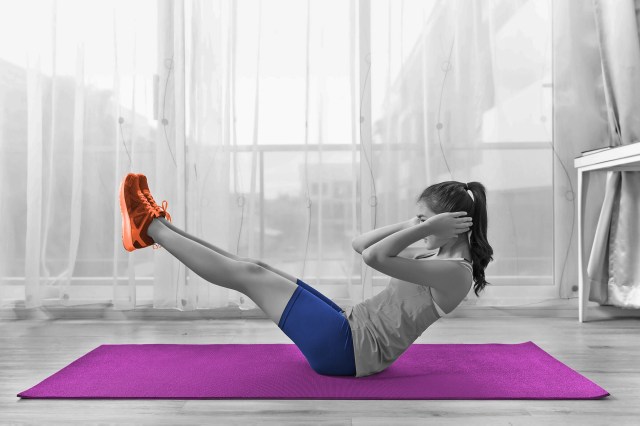
Exercise Can Get Some People High
You may have heard of a “runner’s high,” or a rush of euphoria after exercise that’s not actually limited to runners. It’s a real biological phenomenon, although it’s relatively rare. The commonly held belief is that it’s caused by hormones called endorphins, but they don’t cross the blood-brain barrier. The more likely culprit is the endocannabinoid system, the same system that cannabis interacts with to create its psychoactive effects.
Exercise increases the amount of endocannabinoids in the bloodstream, which can cross the blood-brain barrier. For some people, this can cause a rush of euphoria, reduced anxiety, and improved mood. This isn’t especially common, though, and there’s much about the phenomenon scientists are still trying to figure out.

Exercise Can Help You Think More Clearly
Ever take a walk to clear your head? It might not just be a change of scenery that gives you a much-needed reset. A growing body of research shows that exercise, including walking, increases cognitive ability.
Exercising increases blood flow, including to the brain. The increase in energy and oxygen could boost performance. But it gets more complex than that. When we exercise, the hippocampus, a part of our brain necessary for learning and memory, becomes more active — and when there’s increased energy in the hippocampus, we think more effectively. Regular exercise could even help reverse age-related brain damage.

Even Babies Need Exercise
Babyhood offers an unparalleled opportunity to mostly just eat and sleep, but in between, infants need at least some exercise. Giving infants several opportunities to move around each day could improve motor skills, bone health, and social development. Tummy time — supervised time with a baby lying face-down — strengthens babies’ neck, shoulder, and arm muscles, too. The World Health Organization (WHO) recommends that babies are active several times a day, including at least 30 minutes on the stomach. Babies still get plenty of dozing time, though; the WHO recommends 12 to 16 hours of sleep for infants 4 months through 11 months of age.
More Interesting Reads

10,000 Steps Was Invented for Pedometer Marketing
If you have a smartwatch or other fitness tracker, you might get a little celebratory notification when you hit 10,000 steps — or maybe you’ve just heard someone refer to “getting their 10,000 steps in.” That benchmark persists because it’s a nice, round number that’s easier to use in marketing materials, not because there’s any scientific basis for it.
Way back in the 1960s, a Japanese company invented a pedometer called Manpo-kei, or “10,000 steps meter,” building off momentum from the 1964 Tokyo Olympics. Nearly 60 years later, it’s still the default setting in many step counters, including Fitbit devices.
While getting 10,000 steps a day is a healthy habit, you don’t have to take that many to see benefits from walking, according to experts. One study found that just 4,400 steps a day can lower the risk of early death by 41%. Benefits increased with additional steps, but topped out at around 7,500 (at least in one study looking at mortality in older women). Of course, your mileage may vary depending on your goals, exercise pace, and general health, but there’s no reason to feel discouraged if you’re not getting a full 10,000 in every day.

“Gymnasium” Comes From the Greek for “School for Naked Exercise”
Today, “gymnasium” or “gym” can refer to a lot of things having to do with physical activity, like a school gymnasium, a health club, or a playground jungle gym. It comes from the ancient Greek word gymnasion, or “school for naked exercise.” Gymnos meant “naked,” and the people using the gym didn’t wear clothes — they just oiled or dusted themselves up. In ancient Greece, physical education was just as important as the arts, and these facilities eventually grew more elaborate, with surrounding changing rooms, baths, and practice rooms.

Gardening Counts as Exercise
Getting your hands dirty in your garden isn’t just a mood-boosting pastime — it’s great exercise, too. All that digging, hauling, and moving works all your major muscle groups, improves mobility, and boosts endurance. It burns some serious energy, too: Even light gardening or yard work can burn more than 300 calories per hour for a 154-pound person, according to the Centers for Disease Control and Prevention. That’s comparable to going dancing or taking a hike. For heavy yard work, like chopping wood, the number jumps up to 440 calories per hour, although the exact number will vary depending on the nature of the work and each individual body.
It’s easy to build a more strenuous workout from your existing gardening routine with simple adjustments like carrying heavier cans of water, switching to a push mower, or increasing walking around your yard. And there’s an additional healthy bonus to garden exercise: Fresh veggies!












